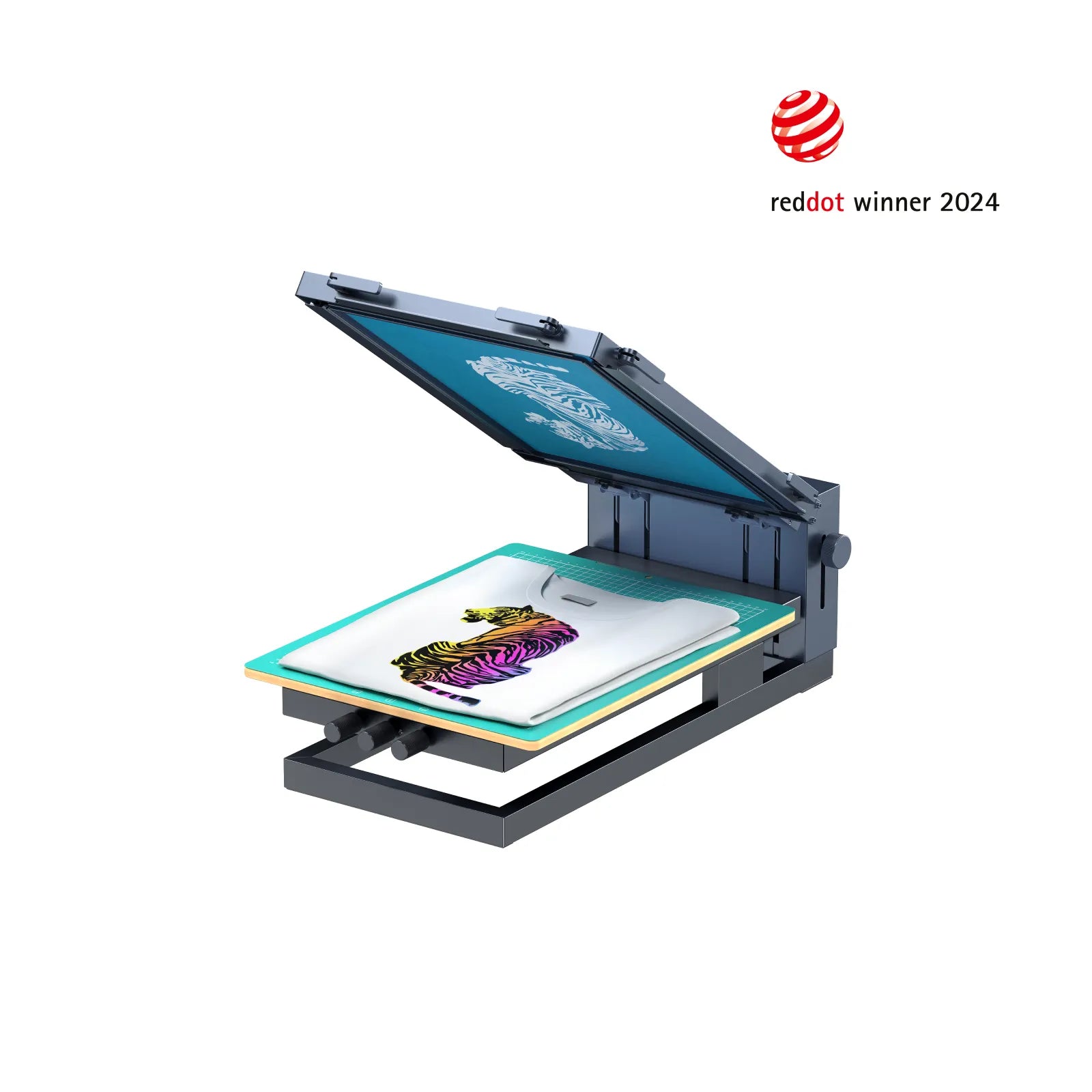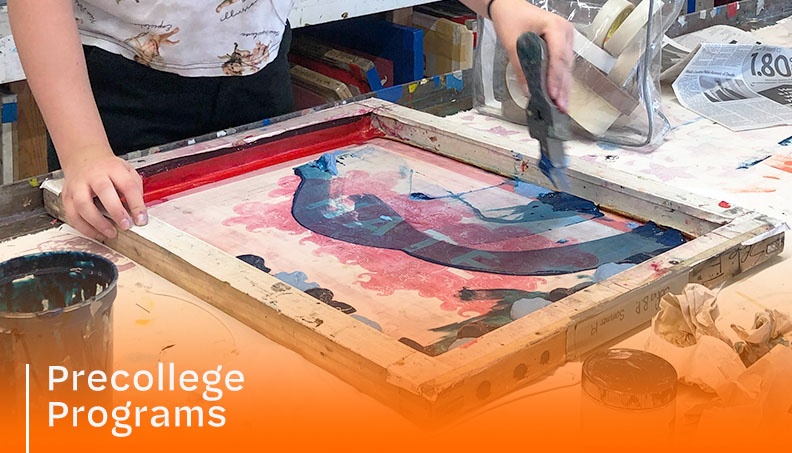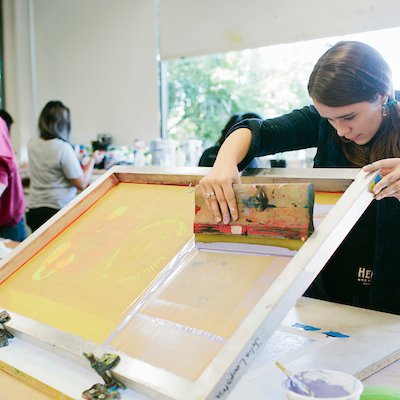The Necessary Overview to Recognizing Screen Printing and Its Versatile Uses
Screen printing has a rich history that dates back to old times, advancing right into an innovative strategy utilized throughout numerous markets today. This guide explores the details of the screen printing process, outlining its applications in style, advertising and marketing, and home decoration - 10:9 Design LLC Company. Recognizing these basics can open creative possibility for both industrial and artistic projects. The complying with sections will expose important pointers and strategies to enhance one's screen printing undertakings
The Background of Screen Printing
Although screen printing has roots that map back centuries, its development mirrors the imaginative and technical improvements of numerous cultures. Stemming in old China, the method was initially made use of for embellishing textiles and later spread to Japan, where it ended up being important to Ukiyo-e woodblock printing. The method moved to Europe in the 18th century, where it obtained popularity amongst craftsmens and commercial printers. The creation of photo solution in the 20th century transformed screen printing, enabling more detailed designs and better performance. Artists like Andy Warhol even more moved its appeal, using the tool to create iconic works that blended commercialism and art. By the late 20th century, screen printing had actually established itself as a flexible strategy, employed in fashion, advertising, and fine art. Today, it remains to progress, integrating digital innovation and broadening its applications across numerous markets.
The Screen Printing Process Explained
Screen printing transforms artistic visions right into substantial designs through a collection of specific steps. An image is created and then transferred onto a screen, normally made of great mesh textile stretched over a structure. A light-sensitive emulsion is related to the screen, which is exposed to light, setting in areas not covered by the image. After cleaning out the unhardened solution, a pattern is developed.
Next, the screen is positioned over the substrate, whether it be textile, paper, or one more material. Ink is after that pressed via the open areas of the stencil using a squeegee, depositing the style onto the substrate below. This process can be repeated for multiple shades, calling for separate screens for each and every shade. The printed product is treated making use of warm to ensure the ink sticks properly, resulting in a durable, vibrant layout prepared for use.
Types of Screen Printing Techniques

Furthermore, specialized strategies, such as discharge screen printing, get rid of dye from the material to develop softer prints, while foil screen printing uses metal aluminum foil to achieve a glossy finish (10:9 Design reviews). Each strategy uses unique features, satisfying various imaginative needs and production scales, inevitably expanding the opportunities within the screen printing domain name
Applications of Screen Printing in Various Industries

Additionally, the signs and marketing fields make use of screen printing for creating eye-catching display screens and banners. This method enables strong colors and detailed styles that record attention. In electronics, screen printing is utilized for applying conductive inks to circuit boards, necessary for component links. In addition, the home decoration industry embraces screen printing to generate distinct designs on textiles and wall surface art. On the whole, screen printing offers as a vital device throughout diverse fields, enhancing products with individualized and visually attractive graphics.
Tips for Successful Screen Printing Projects
While undertaking a screen printing task, mindful attention to detail can considerably enhance the last result. Initially, choosing premium products is essential; this includes the screen, inks, and substratums. Utilizing suitable mesh counts can influence ink deposition and information resolution. Preparation is equally crucial; extensive cleansing of displays and appropriate direct exposure times guarantee crisp prints.
Next off, precise registration is critical for multi-color prints. Using placement devices can assist attain precise layering. Furthermore, testing prints on scrap materials prior to production aids determine possible problems without throwing away resources.

Regularly Asked Concerns
What Materials Are Best for Screen Printing on Material?
Cotton and polyester blends are excellent for screen printing on textile as a result of their resilience and ink absorption. Additionally, specialized textiles like silk or canvas can create one-of-a-kind textures and surfaces, improving the total layout quality.
How Do I Clean and Maintain Screen Printing Equipment?
To keep and clean up screen printing devices, one should on a regular basis clean screens with appropriate solvents, evaluate mops for wear, lubricate moving components, and store all products in a dry, dust-free environment to lengthen their life expectancy.
What Are the Ecological Effects of Screen Printing?
Screen printing can have significant environmental impacts, including chemical waste from solvents and inks, water usage during cleansing procedures, and energy intake. Green products and lasting techniques are essential for lessening these adverse effects.
Can Screen Printing Be Done in your home Efficiently?
Screen printing can be properly done at vinyl window sign printing home with the ideal materials and methods. Enthusiasts can create top quality prints, though success depends on their skill degree, devices, and understanding of the procedure involved.
What Are the Expenses Related To Starting a Screen Printing Business?

Starting a screen printing organization involves prices for equipment, materials, and work area. Preliminary expenses typically range from a few hundred to a number of thousand bucks, depending on the range, high quality of machinery, and wanted manufacturing capability.
Screen printing has a rich history that dates back to old times, advancing right into an advanced technique utilized throughout numerous industries today. An additional method, rotary screen printing, uses round screens, promoting constant printing on fabric rolls, thus boosting effectiveness for large-scale productions. In addition, specialized techniques, such as discharge screen printing, get rid of dye from the fabric to create softer prints, while foil screen printing uses metal foil to attain a glossy surface. In the fashion market, screen printing is widely utilized to produce vibrant styles on clothing, enabling brand names to display their unique styles. Cotton and polyester blends are ideal for screen printing on textile due to their resilience and ink absorption.